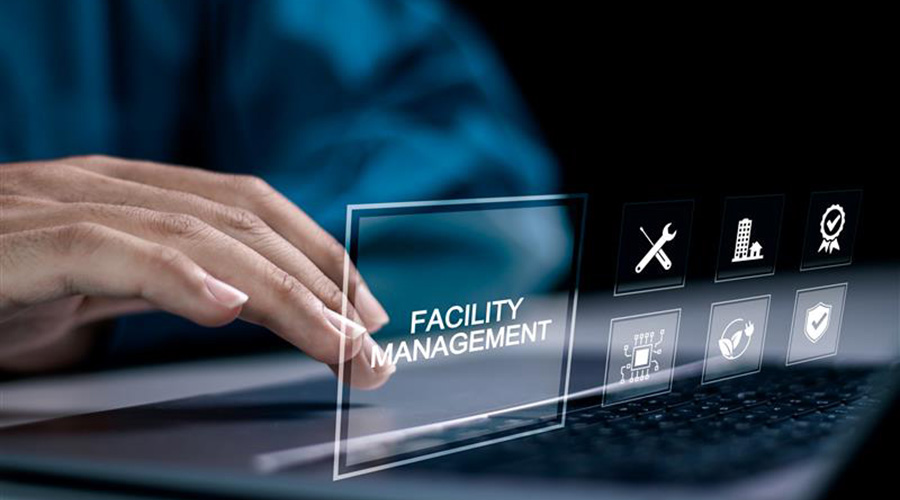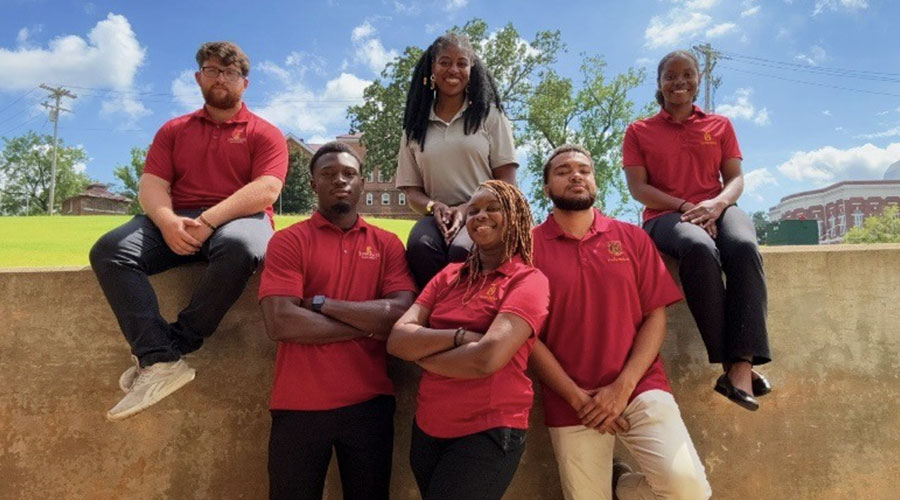Staffing Strategies from Recruitment to Retention
Managers must embrace technology to streamline processes, increase efficiency and enhance the work experience for technicians.
By Darrell X. Rounds, contributing writer
In today's competitive job market, finding, hiring, training and retaining skilled facility maintenance technicians is a top priority for institutional and commercial facilities.
With the increasing demand for qualified technicians and the retirement of experienced professionals, maintenance and engineering managers are facing significant challenges in building and maintaining their technical workforce. By using proven strategies and tactics, managers can implement effective recruitment, training and retention programs to attract and retain top talent, ensuring the smooth operation and maintenance of facilities.
Assessing needs
Before embarking on any recruitment efforts, managers first must assess their current staffing needs and plan for future growth. By analyzing data and projecting staffing requirements, managers can make informed decisions about the number and types of technicians needed to meet the demands of their facilities.
One approach is to calculate staff-to-occupant ratios, considering the square footage or acreage of the facility. For example, one maintenance technician might be required per certain square footage or acreage. By understanding these ratios, managers can better predict their hiring needs as facilities expand and workloads increase.
Another approach is to determine staff needs based on work plans for the facility. Managers can determine needs by calculating the number of technician hours associated with facility management requirements for the building. A computerized maintenance management system can provide a report on the hours associated with preventive and reactive maintenance tasks for the building. In understanding the number of many labor hours associated with the work required to maintain the facility, manager can understand true staffing needs.
Effective recruitment
To attract qualified technicians, managers can use various recruitment strategies. The most effective approaches include these:
Partnering with educational institutions. Collaborating with local community colleges, trade schools and vocational programs can provide access to a pool of talented students who are interested in pursuing a career in facilities. By offering internships, apprenticeships or job placement programs, managers can groom students to become future technicians.
Using experienced contractors. Experienced construction contractors seeking more stable hours and less physical demand might be interested in transitioning to facilities. By tapping into this talent pool, managers can leverage the expertise of these individuals to meet their maintenance and repair needs.
Hiring veterans. Veterans who have gained valuable technical skills and experience during military service can be valuable assets to facilities teams. Organizations like Hire Heroes USA and Hiring Our Heroes provide platforms for companies to connect with veterans and their spouses.
Networking and word of mouth. Attending industry conferences, expositions and networking events can give managers opportunities to connect with other professionals and tap into their networks. Building partnerships with other facilities or organizations in the area also can create a local resource for knowledge, tools and potential career opportunities.
Marketing smarter. When producing marketing and creating job ads, managers should focus on highlighting the unique benefits and opportunities their organizations offer. Instead of simply listing job requirements, managers should craft ads that sell the organization culture, career development prospects and work-life balance. By emphasizing these aspects, managers can attract candidates who align with their values and are motivated to contribute to the organization's success.
Training and development
Providing comprehensive training and development programs is essential for engaging and retaining technical staff. By investing in their employees' professional growth, managers can create a sense of loyalty and commitment among technicians. Some effective training strategies include:
Competency-based training. Establishing a structured program that allows technicians to progress through different competency levels can motivate them to continuously improve their skills. By setting clear expectations and providing training opportunities for each level, managers can ensure technicians can handle increasingly complex tasks.
Certification programs. Encouraging technicians to obtain industry certifications can enhance their expertise and prepare them for leadership roles. Managers should support and provide resources for technicians to pursue these certifications.
Continuing education. Keeping technicians up to date with industry trends, technologies and regulations is crucial for maintaining an elevated level of performance. Managers should provide opportunities for technicians to attend workshops, conferences and seminars, or they should offer online training courses to ensure professional development.
Tuition assistance. Helping technicians by offsetting educational costs and fees can solidify an organization’s commitment to the development of employees, and it shows the technicians that the organization believes in them and is dedicated to their success.
Spotlight on retention
Retaining experienced technicians is as important as attracting new talent. Managers can implement various retention strategies to create a positive work environment and foster employee loyalty. Among the most effective approaches are these:
Career advancement opportunities. Providing technicians with a clear career path and opportunities for growth in the organization can increase job satisfaction and motivation. By offering advancement to higher-level positions or specialized roles, managers can demonstrate their commitment to employee development.
Work-life balance initiatives. Creating a healthy work-life balance is essential for employee satisfaction and retention. Managers can implement flexible work arrangements, wellness programs and employee support initiatives to promote a positive work environment.
Recognition and rewards. Recognizing and rewarding technicians for hard work and achievements can boost morale and job satisfaction. Managers can implement performance-based reward systems, employee of the month programs and other forms of recognition to show appreciation for their technicians' contributions.
Communication and collaboration
Effective communication and collaboration among managers and technicians are crucial for strengthening working relationships and maintaining a positive work culture. Communication and collaboration also are crucial for health, safety, streamlined operations, problem-solving, resource optimization, decision-making, preventive maintenance, goal alignment, continuous improvement, team morale and knowledge sharing.
These factors collectively contribute to the overall success and efficiency of the team. Managers should foster an open-door policy, encourage regular feedback and dialogue and provide opportunities for technicians to contribute their ideas and suggestions. By involving technicians in decision-making processes and valuing their opinions, managers can create a sense of ownership and engagement among technicians.
Embracing technology
In today's digital age, maintenance and engineering managers must embrace technology and automation to streamline processes, increase efficiency and enhance the work experience for technicians. When managers adopt advanced technologies and automation, they showcase their commitment to innovation and staying abreast of industry trends.
This approach can attract tech-savvy candidates excited about working in a forward-thinking environment. Investing in facility management software, predictive maintenance tools, and IoT-enabled devices can empower technicians to work more effectively.
By leveraging technology, managers can optimize workflows, reduce downtime and allocate resources more efficiently. This approach also aligns with the expectations of modern candidates, enhances job satisfaction, provides opportunities for growth and fosters a culture of innovation – all of which contributes to a more successful, stable workforce.
Building organizational culture
Creating a positive organizational culture is essential for attracting and retaining top technical talent in facilities. A positive culture attracts candidates, and it creates an environment where employees are motivated, engaged and committed to their roles, ultimately contributing to the facility's success and stability.
Managers should foster a culture of trust, respect and collaboration. By promoting teamwork, providing opportunities for skill sharing and cross-training and encouraging a healthy work-life balance, managers can create an environment where technicians feel valued and motivated.
The by-products of this positive culture include attracting top talent, creating a workplace that stands apart from others, increasing job satisfaction, increasing employment engagement where technicians are committed to their work and building a positive company reputation.
Continuous improvement
Facilities are constantly evolving, and managers must be adaptable. By staying informed about industry trends, emerging technologies and best practices, they can ensure that technicians are equipped with the knowledge and skills needed to meet evolving demands.
Continuous improvement initiatives, such as process optimization and performance evaluations, also can help identify areas for growth and professional development. An organization that displays a continuous improvement mindset tells potential candidates the organization values innovation. The approach can attract motivated candidates and tech-savvy technicians seeking a dynamic, progressive work environment.
Regularly adapting processes, systems and technologies also prevents the work environment from stagnating. Technicians are more likely to stay when they have the chance to work on evolving challenges.
Finding, hiring, training and retaining skilled maintenance and engineering technicians is a multifaceted challenge. By implementing effective recruitment strategies, providing comprehensive training and development programs, fostering a positive work culture, embracing technology, and staying adaptable, managers can build and maintain a highly skilled and motivated technical workforce. Investing in the growth and well-being of technicians not only ensures the smooth operation of facilities. It also contributes to the organization’s long-term success.
Darrell X. Rounds, FMA, C.E.M., has had several leadership roles ranging from facilities management and contractor safety to diversity, equity and inclusion over the last 26 years. He remains a thought leader and advocate in the facilities management community.
Related Topics:












